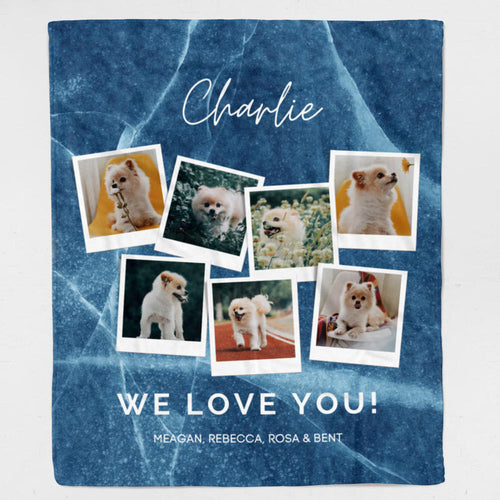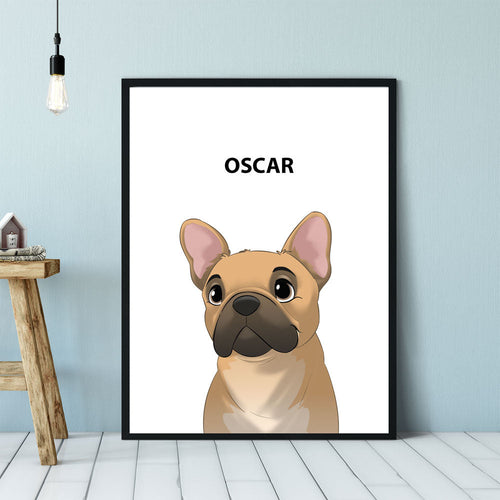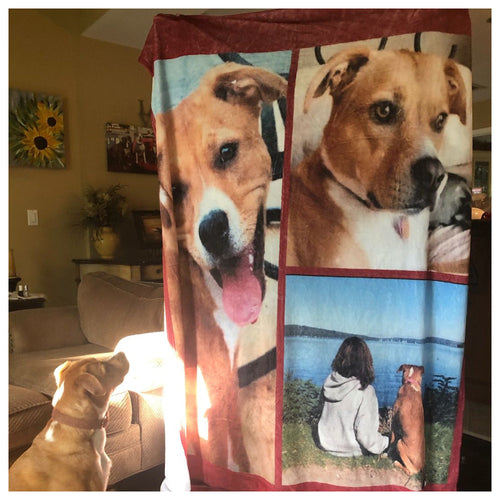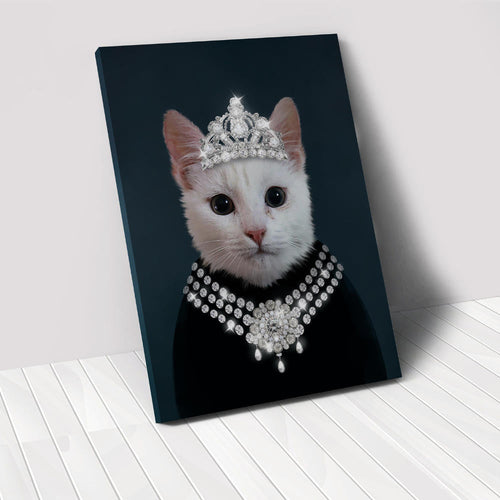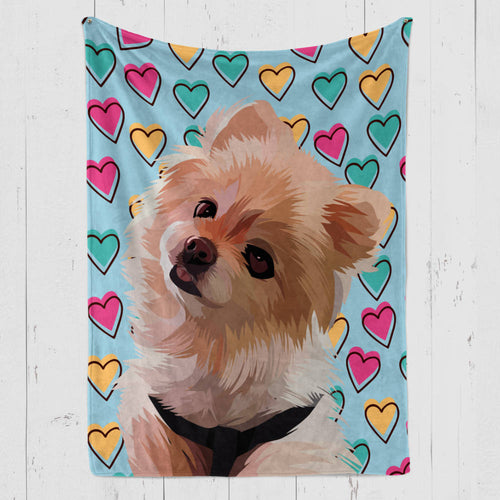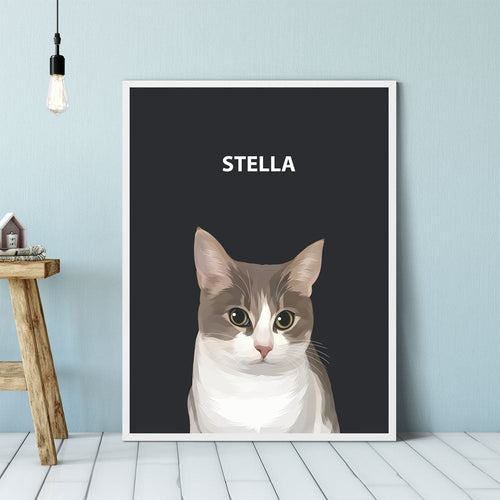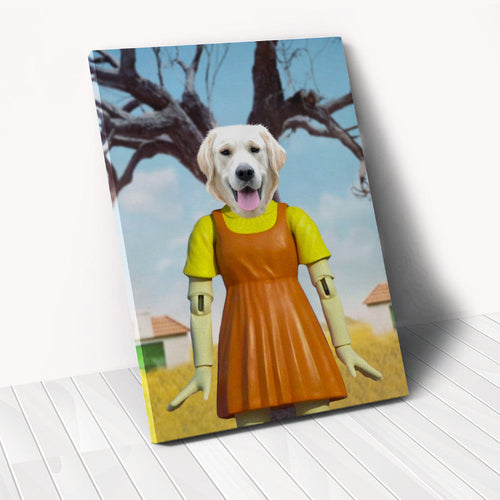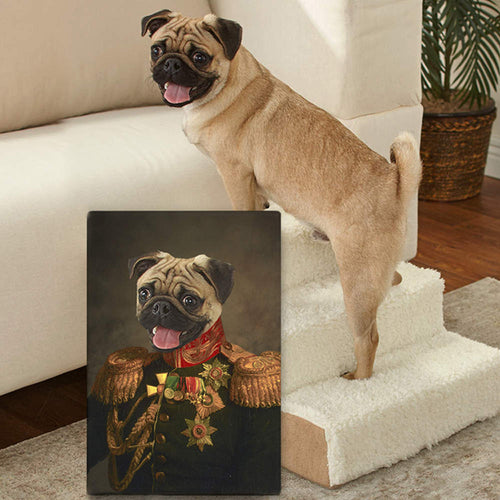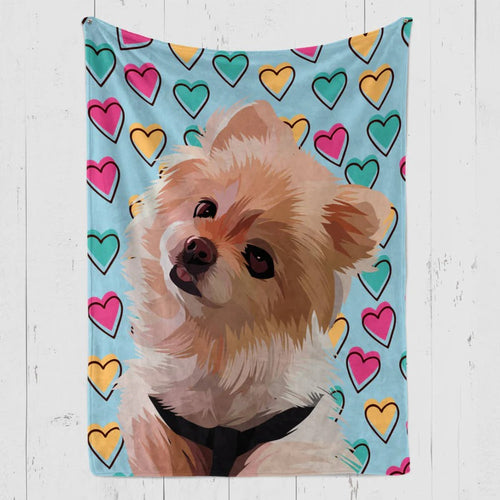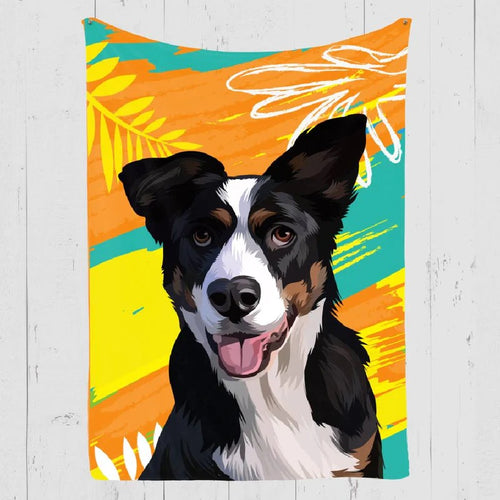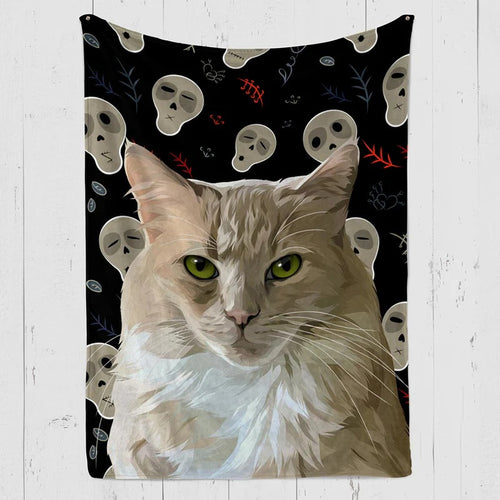
You may know the phrase "deep-chested dog" and its corresponding pros and cons. But what exactly is a deep-chested dog? Also, which doggos fall under this category?
Deep-chested dog breeds have a wider chest from side to side than it is tall or from the spine forward. A deep-chested dog is sometimes called a dog whose chest curves up to the elbows. In this blog, we will discuss more about these canines in detail, so read it till the end to get an insight into these canine companions.
10 Deep Chested Dog Breeds
Here is a compilation of the 10 most popular dog breeds with a deep chest
1. Rottweiler
Due to their size and strength, this breed was once known as herd guardians and police dogs. However, they are now more commonly found as family dogs. Don't be fooled by their intimidating exterior; Rottweilers are friendly pets. Their grooming needs are reasonable; if you become familiar with their specific requirements, caring for them is easy.
- Group: Working group
- Height: 22 to 27 inches
- Weight: 50 to 105 pounds
- Energy Level: Moderate to high energy level
- Physical Characteristics: Blocky dogs with big heads. The ears are large and close to the head. Rottweilers have robust, square mouths.
- Lifespan: 8 to 10 years
- Color: Black, tan, mahogany
- Shedding: Moderate shedding with high shedding during spring and fall
- Bark: These dogs don’t bark a lot
2. Akita

Akita dogs have a royal history since they were bred to protect royal households in medieval Japan. They have become popular these days as domestic companions charged with guarding the family. Akitas are guardian breeds that readily accept various types of training, eliminating any indication of persistence.
- Group: Working group
- Height: 24 to 28 inches
- Weight: 80 to 110 pounds
- Energy Level: High energy level
- Physical Characteristics: They are large, spitz-like dogs with strong bones and an imposing posture. A thick, curled tail balances the huge, broad head in the back.
- Lifespan: 10 to 12 years
- Color: White, sesame, brindle, red fawn
- Shedding: They shed a lot
- Bark: These dogs only bark when needed
3. Whippet

Whippets are exceptional at showing affection to humans due to their strong family orientation and ability to control their prey. This quality makes them excel as companions. Despite their energetic nature, Whippets adapt well to smaller homes or apartments as long as they play various sports and are regularly outdoors.
- Group: Hound group
- Height: 19 to 21 inches
- Weight: 20 to 40 pounds
- Energy Level: Active
- Physical Characteristics: The dog is strong throughout, with long, slender legs, a deep chest, a tucked-in belly, and a rather narrow body. They have big, shiny eyes.
- Lifespan: 12 to 15 years
- Color: Black, white, brindle, fawn, blue, red
- Shedding: Lower than other dogs
- Bark: These dogs don't bark a lot
4. German Shepherd

German Shepherds are famous all over the world for extraordinary reasons. This breed is known for its exceptional athleticism and human compatibility. They are kind and loving to all family members, children and adults. They are still unyieldingly committed to protecting their loved ones.
- Group: Herding Group
- Height: 24 to 26 inches
- Weight: 66 to 88 pounds
- Energy Level: Active
- Physical Characteristics: The head is wide and tapers nicely into a sharp muzzle. The ears are relatively large and stand upright. The back is straight and muscular and the tail is bushy and curved downwards
- Lifespan: 9 to 13 years
- Colour: Black, silver, grey, white, black and silver, red and black, black and tan
- Shedding: Sheds coats throughout the year
- Bark: These dogs bark a lot
5. Greyhounds

Greyhounds were originally bred as hunting companions, but thanks to their friendly temperament and enduring family ties, they have now become essential members of many families. In addition, greyhounds are kind to strangers. They are easy to train because they naturally desire to obey orders and please their owners.
- Group: Sighthound group
- Height: 26 to 30 inches
- Weight: 60 to 70 pounds
- Energy Level: Low energy level
- Physical Characteristics: It has a deep chest and long neck, long, strong hind legs, and a long, thin tail. It has a short, silky, and multi-colored coat.
- Lifespan: 10 to 14 years
- Color: Black, brindle, white, fawn, blue, red
- Shedding: They do not shed a lot
- Bark: These dogs don’t bark excessively
6. Bloodhounds

Originating in France for use as police hunting dogs and scent detection specialists, Bloodhounds have assimilated into many modern households. Their appeal is supported by a fondness for people and a mildly humorous nature. Bloodhounds are wonderful family dogs because they are more devoted to their owners than many other breeds.
- Group: Hound group
- Height: 25 to 27 inches
- Weight: 90 to 110 pounds
- Energy Level: High energy level
- Physical Characteristics: They have large drooping ears, a long and wrinkled face with loose skin, and warm, deep-set eyes.
- Lifespan: 10 to 12 years
- Color: Liver and tan, black and tan, red
- Shedding: These dogs shed their fur throughout the year
- Bark: They don’t bark a lot
7. Labrador Retriever

People choose the Labrador Retriever breed because of its excellent qualities. They are considered one of the friendliest dog breeds in the world and are a great choice, especially for people who have never owned a dog before. There is no reason to doubt the high intellect of Labradors, given their remarkable reputation for intelligence.
- Group: Sporting Group
- Height: 21.5 to 24.5 inches
- Weight: 55 to 80 pounds
- Energy Level: High energy level
- Physical Characteristics: The broad head, drooping ears, and large, expressive eyes of these dogs make them easy to identify. They have a dense but relatively short double coat.
- Lifespan: 10 to 12 years
- Colour: Black, yellow, chocolate
- Shedding: This dog shed throughout the year
- Bark: Moderate barking
8. Great Dane

Great Danes may seem intimidating when they glare at you with their majestic gaze. But they are actually one of the friendliest and most affectionate dog breeds. Despite their large size, Great Danes show great affection for love and concern for all family members, including children. They easily establish joyful relationships with children.
- Group: Working group
- Height: 30 to 32 inches
- Weight: 100 to 120 pounds
- Energy Level: High energy level
- Physical Characteristics: Strong and long neck. The Great Dane's front legs are straight, and its body is long and robust.
- Lifespan: 8 to 10 years
- Color: Black, brindle, fawn, harlequin, mantle, blue
- Shedding: They shed on a moderate to heavy level
- Bark: Depends on how they are trained and raised
9. Doberman

The Doberman was originally bred as a guard dog, as were many of the aforementioned deep-chested dog breeds. In households today, they serve as guard dogs and as beloved family pets. Dobermans are extremely obedient and loving towards their family members.
- Group: Working group
- Height: 26 to 28 inches
- Weight: 60 to 65 pounds
- Energy Level: High energy level
- Physical Characteristics: Doberman Pinschers are small, strong, fast, and powerful canines. The body is slim yet firm.
- Lifespan: 10 to 13 years
- Color: Black, white, fawn, black and rust, blue and rust, red and rust, fawn and rust, blue, red
- Shedding: They shed on a moderate level
- Bark: These dogs bark more than other dogs
10. Golden Retriever
 Golden Retrievers actively show their love and admiration for their families. They represent a trusted alternative to foster care, providing unconditional protection and affection. In addition, they are fun-loving companions for your children. These dogs are easy to train because of their highly intuitive nature. They readily accept commands and adapt well to training.
Golden Retrievers actively show their love and admiration for their families. They represent a trusted alternative to foster care, providing unconditional protection and affection. In addition, they are fun-loving companions for your children. These dogs are easy to train because of their highly intuitive nature. They readily accept commands and adapt well to training.- Group: Sporting Group
- Height: 21. 5 to 24 inches
- Weight: 55 to 75 pounds
- Energy Level: Active
- Physical Characteristics: They have shiny, glistening golden coats. Golden Retrievers have large heads, characterized by short ears, friendly, intelligent eyes and a straight muzzle.
- Lifespan: 10 to 12 years
- Color: Dark golden, light golden, cream, golden
- Shedding: They shed a lot
- Bark: They don't bark too much
Takeaway
Deep-chested dog breeds can be recognized by the increased vertical diameter of their chest, which runs from the spine forward, as opposed to the width from side to side. The anatomical characteristics of these breeds provide them with a greater capacity for blood circulation throughout the body and space for larger lung volumes to increase respiratory performance. Deep-chested breeds include Akita, Doberman, German Shepherd and Great Dane.
Frequently Asked Questions
What are the health conditions that deep-chested dogs have?
Deep-chested dogs are more vulnerable to a condition known as bloat, also known as gastric dilatation and volvulus (GDV). This potentially fatal disease develops when a dog's stomach becomes bloated with gas, causing the stomach to dilate.
How to prevent bloat in a dog’s chest?
To prevent bloating in your dog’s chest, keep in mind the following things:
- Give your dog three to four small meals each day.
- Get "portion pacers" or customized dog bowls to make them work harder to get to their food and slow down their consumption.
- Mix wet and dry foods in the menu.
- Cut out foods with a lot of fat.
- Do not let your pet out for a walk after eating.
What are the common health problems in deep-chested dog breeds?
There is much evidence of a link between deep-chested dog breeds and the occurrence of bloat, a fatal disease. Bloating, also known as gastric dilatation-volvulus (GDV), is a potentially fatal condition in which gas builds up in a dog's stomach to the point where the stomach twists and blocks both the inlet and outlet tubes.
Does a deep-chested dog breed need special exercise routines?
Deep-chested and narrow-bodied breeds should not be exercised immediately after eating, as they are prone to bloat. The effect of prolonged running also puts these breeds at risk for hip dysplasia and ligament damage.
What are the advantages of a deep chest in dogs?
A dog's endurance and athleticism increase because the deep chest allows for greater lung capacity. The roomy interior of the deep chest gives the heart plenty of room to move, increasing the dog's ability to deliver more blood and oxygen to the muscles. Additionally, dogs with a deeper chest can breathe more air, increasing their olfactory sensors' sensitivity. A deep chest is also useful in cold climates as it increases lung capacity and retains heat.
What are some deep-chested dog breeds?
Here is a list of some of the most popular deep-chested dog breeds:
- German Shepherd
- Whippet
- Rottweiler
- Akita
- Greyhounds
- Golden Retriever
- Labrador Retriever
- Bloodhounds
- Great Dane
- Doberman
Do all dogs with a deep chest have a bloating problem?
Deep-chested dogs and large breeds are more prone to bloat. Great Danes are one breed prone to bloat, with almost 39% of them experiencing it at some point in their lives.
How do you choose the best deep-chested dog breed as per lifestyle?
Consider your living situation, daily schedule, and activity level when evaluating your lifestyle. Explore numerous breeds, learn about different dog breeds, and ask experts for recommendations. If you can, think about getting a dog. Consider the dog's age and size when selecting and remaining practical throughout.
Latest Review on Woof Blankets
To have such a masterpiece by my side every day is a gift for me and my memories with Rex. Thank you WoofBlankets for such an opportunity to recreate his image on a blanket.Lara o’ Miguel US, California
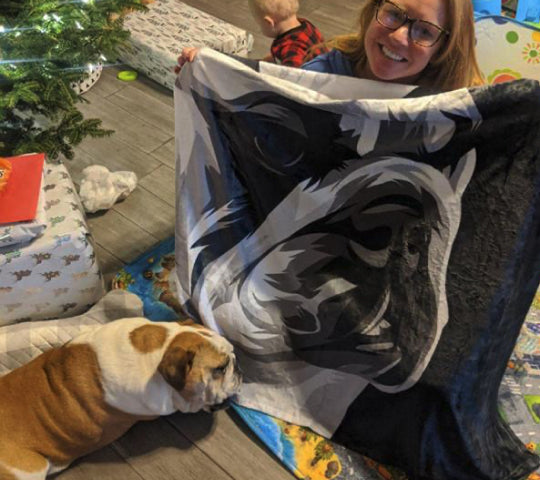
COLLECTION WORTH EVERY PENNY
BEST SELLERS
-
Woofy Single Color Custom Pet Blanket
![Woofy Single Custom Pet Blanket – Woof Blanket]()
- -41%
BlanketsSHOP NOW- Regular price
- from $64.95
- Sale price
- from $64.95
- Regular price
-
$109.95 - Unit price
- per
Sold out -
Exclusive Christmas Custom Pet Blanket
![Exclusive Custom Pet Blanket]()
- -39%
BlanketsSHOP NOW- Regular price
- from $69.95
- Sale price
- from $69.95
- Regular price
-
$114.95 - Unit price
- per
Sold out -
Christmas Custom Pet Blanket
![Christmas Custom Pet Blanket - Custom Dog Blankets]()
- -40%
BlanketsSHOP NOW- Regular price
- from $69.95
- Sale price
- from $69.95
- Regular price
-
$115.95 - Unit price
- per
Sold out -
Watercolor Pet Portraits
![]() SHOP NOW
SHOP NOW- Regular price
- from $59.95
- Sale price
- from $59.95
- Regular price
-
- Unit price
- per
Sold out -
Woofy Christmas Custom Dog Blanket
![Woofy Christmas Custom Dog Blanket]()
- -39%
BlanketsSHOP NOW- Regular price
- from $69.95
- Sale price
- from $69.95
- Regular price
-
$114.95 - Unit price
- per
Sold out -
Modern Pet Owner Portrait
![]()
- -32%
CanvasSHOP NOW- Regular price
- from $84.95
- Sale price
- from $84.95
- Regular price
-
$124.95 - Unit price
- per
Sold out -
Woof Splash Custom Pet Blanket
![Woof Splash Custom Pet Blanket]()
- -39%
BlanketsSHOP NOW- Regular price
- from $69.95
- Sale price
- from $69.95
- Regular price
-
$114.95 - Unit price
- per
Sold out -
The Admiral - Custom Pet Portrait
![The Admiral - Custom Pet Portrait Online]()
- NEW
- -25%
CanvasSHOP NOW- Regular price
- from $59.95
- Sale price
- from $59.95
- Regular price
-
$79.95 - Unit price
- per
Sold out -
Wings of Loyalty - Custom Pet Portrait
![]()
- NEW
CanvasSHOP NOW- Regular price
- from $59.95
- Sale price
- from $59.95
- Regular price
-
- Unit price
- per
Sold out -
Pet Memorial Custom Photo Collage Blanket
![Personalized pet memorial quilt with photos]()
- -41%
BlanketsSHOP NOW- Regular price
- from $64.95
- Sale price
- from $64.95
- Regular price
-
$109.95 - Unit price
- per
Sold out -
Celestial Paws - Custom Pet Portrait
![]() CanvasSHOP NOW
CanvasSHOP NOW- Regular price
- from $59.95
- Sale price
- from $59.95
- Regular price
-
- Unit price
- per
Sold out -
The Loyal Soul - Custom Pet Portrait
![]()
- NEW
SHOP NOW- Regular price
- from $59.95
- Sale price
- from $59.95
- Regular price
-
- Unit price
- per
Sold out -
Cartoonized Pet Portraits (New)
![Cartoonized Pet Custom Portraits Online]()
- -36%
SHOP NOW- Regular price
- from $59.95
- Sale price
- from $59.95
- Regular price
-
$93.95 - Unit price
- per
Sold out -
The French Sailor - Custom Pet Portrait
![]()
- -25%
CanvasSHOP NOW- Regular price
- from $59.95
- Sale price
- from $59.95
- Regular price
-
$79.95 - Unit price
- per
Sold out -
The Policeman - Custom Pet Portrait
![]()
- NEW
- -25%
CanvasSHOP NOW- Regular price
- from $59.95
- Sale price
- from $59.95
- Regular price
-
$79.95 - Unit price
- per
Sold out -
The General - Custom Pet Portrait
![]()
- NEW
- -25%
CanvasSHOP NOW- Regular price
- from $59.95
- Sale price
- from $59.95
- Regular price
-
$79.95 - Unit price
- per
Sold out -
Woof Love Custom Pet Blanket
![Woof Love Custom Pet Blanket]()
- -39%
BlanketsSHOP NOW- Regular price
- from $69.95
- Sale price
- from $69.95
- Regular price
-
$114.95 - Unit price
- per
Sold out -
Summer Time Custom Pet Blanket
![Summer Time Custom Pet Blanket]()
- -39%
BlanketsSHOP NOW- Regular price
- from $69.95
- Sale price
- from $69.95
- Regular price
-
$114.95 - Unit price
- per
Sold out -
The Ambassador - Custom Pet Portrait
![The Ambassador - Custom Pet Portrait Online]()
- NEW
- -25%
CanvasSHOP NOW- Regular price
- from $59.95
- Sale price
- from $59.95
- Regular price
-
$79.95 - Unit price
- per
Sold out -
Fall In Love Custom Pet Blanket
![Fall In Love Custom Dog Blanket]()
- NEW
- -39%
BlanketsSHOP NOW- Regular price
- from $69.95
- Sale price
- from $69.95
- Regular price
-
$114.95 - Unit price
- per
Sold out -
The Classy Lady - Custom Pet Portrait
![The Classy Lady]()
- NEW
- -25%
CanvasSHOP NOW- Regular price
- from $59.95
- Sale price
- from $59.95
- Regular price
-
$79.95 - Unit price
- per
Sold out -
The Duke - Custom Pet Portrait
![The Duke - Custom Pet Portrait]()
- NEW
- -25%
CanvasSHOP NOW- Regular price
- from $59.95
- Sale price
- from $59.95
- Regular price
-
$79.95 - Unit price
- per
Sold out -
Dog In Suit- Custom Pet Portrait
![Dash Dog In Suit- Custom Pet Portrait Online]()
- NEW
- -25%
CanvasSHOP NOW- Regular price
- from $59.95
- Sale price
- from $59.95
- Regular price
-
$79.95 - Unit price
- per
Sold out -
The Princess - Custom Pet Portrait
![]()
- NEW
- -25%
CanvasSHOP NOW- Regular price
- from $59.95
- Sale price
- from $59.95
- Regular price
-
$79.95 - Unit price
- per
Sold out -
Modern Pet Portrait with One Mug
![Modern Pet Portrait with One Mug]()
- -25%
Print MaterialSHOP NOW- Regular price
- from $99.95
- Sale price
- from $99.95
- Regular price
-
$133.95 - Unit price
- per
Sold out -
The Aristocrat - Custom Pet Portrait
![The Aristocrat - Custom Pet Portrait At Best Price]()
- NEW
- -25%
CanvasSHOP NOW- Regular price
- from $59.95
- Sale price
- from $59.95
- Regular price
-
$79.95 - Unit price
- per
Sold out -
Single Color Custom Blanket with 1 Mug
![Single Color Custom Blanket with 1 Mug]() BlanketsSHOP NOW
BlanketsSHOP NOW- Regular price
- from $99.95
- Sale price
- from $99.95
- Regular price
-
- Unit price
- per
Sold out -
Single Color Custom Blanket with 2 Pillows
![Single Color Custom Pet Blanket with 2 Pillows]()
- -21%
BlanketsSHOP NOW- Regular price
- from $99.95
- Sale price
- from $99.95
- Regular price
-
$125.95 - Unit price
- per
Sold out -
The Dog in Suit Custom Pet Mug
![]()
- -20%
MugsSHOP NOW- Regular price
- $39.95
- Sale price
- $39.95
- Regular price
-
$49.95 - Unit price
- per
Sold out -
Angel Custom Pet Mug
![]()
- -20%
MugsSHOP NOW- Regular price
- $39.95
- Sale price
- $39.95
- Regular price
-
$49.95 - Unit price
- per
Sold out -
This Human Belongs To - Custom Pet Mug
![]()
- NEW
- -20%
MugsSHOP NOW- Regular price
- $39.95
- Sale price
- $39.95
- Regular price
-
$49.95 - Unit price
- per
Sold out -
It's Not Dog Hair Custom Pet Mug
![]()
- NEW
- -20%
MugsSHOP NOW- Regular price
- $39.95
- Sale price
- $39.95
- Regular price
-
$49.95 - Unit price
- per
Sold out -
My Dog Is My Valentine Custom Pet Mug
![]()
- NEW
- -20%
MugsSHOP NOW- Regular price
- $39.95
- Sale price
- $39.95
- Regular price
-
$49.95 - Unit price
- per
Sold out -
3 Photos With Message Custom Pet Mug
![]()
- NEW
- -20%
MugsSHOP NOW- Regular price
- $39.95
- Sale price
- $39.95
- Regular price
-
$49.95 - Unit price
- per
Sold out -
My Valentine Has Four Legs- Personalized Mugs
![]()
- NEW
- -20%
MugsSHOP NOW- Regular price
- $39.95
- Sale price
- $39.95
- Regular price
-
$49.95 - Unit price
- per
Sold out -
Dog Mamma Custom Pet Coffee Mug
![]()
- -20%
MugsSHOP NOW- Regular price
- $39.95
- Sale price
- $39.95
- Regular price
-
$49.95 - Unit price
- per
Sold out -
Uncle Sam - Custom Pet Portrait
![]()
- NEW
- -25%
CanvasSHOP NOW- Regular price
- from $59.95
- Sale price
- from $59.95
- Regular price
-
$79.95 - Unit price
- per
Sold out -
The Revolutionary Emperor - Custom Pet Portrait
![]()
- NEW
- -25%
CanvasSHOP NOW- Regular price
- from $59.95
- Sale price
- from $59.95
- Regular price
-
$79.95 - Unit price
- per
Sold out -
The Princess Paws - Custom Pet Portrait
![]()
- -25%
CanvasSHOP NOW- Regular price
- from $59.95
- Sale price
- from $59.95
- Regular price
-
$79.95 - Unit price
- per
Sold out -
The Dark Crusader Knight - Custom Pet Portrait
![]()
- -25%
CanvasSHOP NOW- Regular price
- from $59.95
- Sale price
- from $59.95
- Regular price
-
$79.95 - Unit price
- per
Sold out
